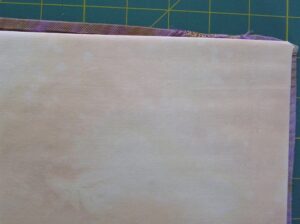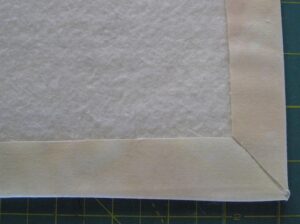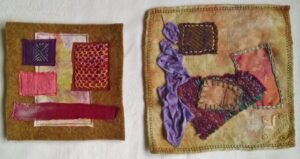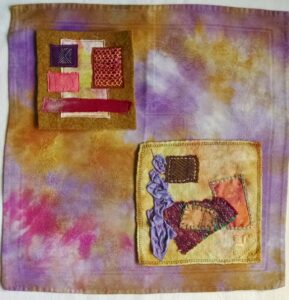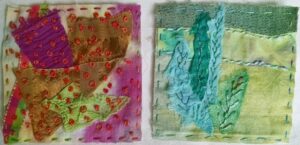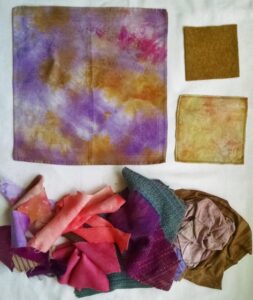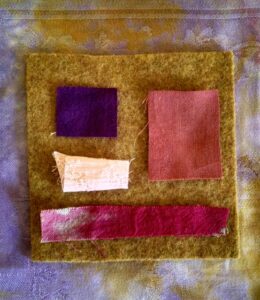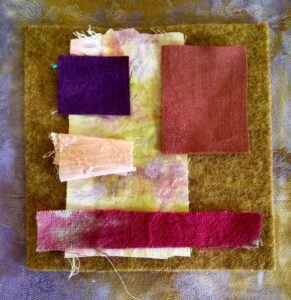Short and sweet today. I just finished a small, dual-purpose project:
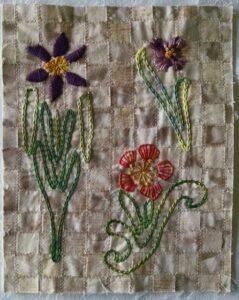
This is a future class sample, and a teaser for some embroidery patterns that I hope to have available soon. The base of the above piece is an example of fabric weaving from Fabric Embellishing: The Basics and Beyond by Ruth Chandler, Liz Kettle, Heather Thomas and Lauren Vleck (Landauer, 2009). I’d love to teach a monthly workshop on fabric embellishing, there are so many surprising techniques to have in our art quilt skill sets. I really enjoy learning and sharing new things with others.
From my “finding inspiration anywhere” files, here is a random snapshot I took last week of spring beauties and a few violets that I found on a walk around the countryside:
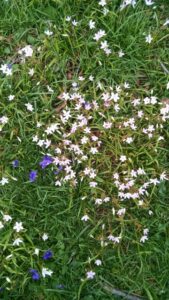
There is a little composition lesson here, this is an example of crystallographic balance, where there is no main focal point. Look at it from a short distance, and there are still areas of negative space, where there are gaps in the flowers. Visual interest comes from those gaps and in the contrast between the short star-like petals of the spring beauties against the long blades of grass sprawling in every direction. Of course, the pop of color from the violets adds an element of surprise. Yes, I am imagining how to turn this into a little stitched piece… someday.
